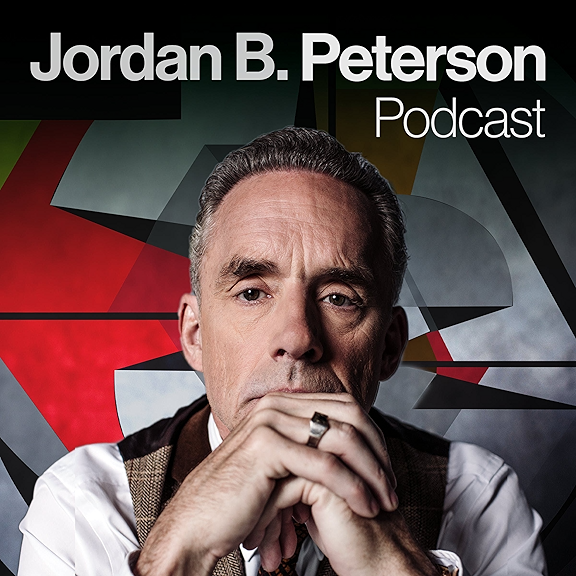
102 | Emotional Regulation: Addressing Stress and Resilience for Parents & Families, with Kensi Evans
Show Notes:
The Polyvagal Theory and the Autonomic Nervous System offer insights into how our bodies respond to stress and social interactions, delineating three distinct states: social engagement, fight or flight, and freeze. As we understand this, we can recognize our physiological reactions and learn better strategies for emotional regulation AND learn to be more resilient. Whether we’re parents trying to create a calmer environment for our families or in our own personal growth journey, understanding these principles unlocks greater well-being and emotional balance in navigating life's challenges.
Enjoy!
-Kendra
Website → https://fulfillmenttherapy.org
Contact → fulfillment.therapist@gmail.com
Facebook Community → http://bit.ly/fulfillmenttherapy
Instagram → @fulfillmenttherapy
Schedule 1:1 Coaching → https://fulfillmenttherapy.org/1-on-1-coaching
Chat → 1-855-542-8008 *Get questions answered before buying
Save on the $600 off the flash sale! Apply the code SAVE600 to get $600 off our last flash sale for the Costa Rican Retreat when you sign up on FulfillmentTherapy.org.
Our Adventure & Personal Growth Retreat includes:
All-Inclusive 6 Day & 6 Night Stay in Costa Rica
Luxurious Private Villa overlooking Bay
Enjoy Latin Cuisine as our Private Chef prepares 3 meals / Day
& Drinks at our Unlimited Open Bar (fancy non-alcoholic drinks included)
Airport shuttle To & From Included
Professional Therapists / Coaches & Expert Team
Women’s, Men’s, and Couples Retreat at Neighboring Villas
5 Specially Created Fulfillment Meditation Sessions
Immersive Training to Elevate your Relationships & Personal Life
Transformative Meditation sessions and yoga
Private Villa is a short Walk from a Quiet, Beautiful Beach (rare for most retreats)
Breathtaking, Unforgettable Excursion in Nature like Ziplining, Hanging Bridges in the Rainforest, a 1500 ft Jungle Water Slide, Waterfall Hikes, Hot Springs, Volcanic Mud Baths, Snorkeling with Sea Life
Sailing, Surfing, Aquatic Adventures, Saunas, and even more…
Breakthrough Fulfillment Workshops + Coaching, Professional workbooks and resources
1 Week Pre-Retreat Virtual Integration Materials
Polyvagal Theory and ANS
The Autonomic Nervous System (ANS):
A complex network of nerves that regulates involuntary bodily functions, such as heart rate, digestion, and respiratory rate. It is divided into two main branches: the sympathetic nervous system, which activates the body's fight or flight response during stress, and the parasympathetic nervous system, which promotes rest and relaxation. The ANS plays a crucial role in maintaining physiological balance and responding to environmental stimuli.
Polyvagal Theory:
Polyvagal Theory, developed by Dr. Stephen Porges, provides insights into the role of the vagus nerve in regulating the Autonomic Nervous System and influencing social behavior. The theory proposes that the vagus nerve mediates between different physiological states, including states of safety and connection (social engagement), mobilization (fight or flight), and immobilization (freeze). By understanding these states and their associated physiological responses, individuals can gain awareness of their own emotional and relational experiences, leading to improved self-regulation and interpersonal connections.
3 Tiers: ventral vagal-safe and social (joy, playful, love, empathy), sympathetic- fight or flight, adrenaline, ACTION state, anxious, hyperactive, lots of tension in body, dorsal vagal- shut down, disconnected, low energy, hopeless, foggy, alone, playing possum, UNABLE to act, shame, inability to self motivate, moving through molasses, in a well, )
Location in the Brain
The vagus nerve originates in the brainstem, specifically the medulla oblongata
Social engagement linked to higher brain regions such as the prefrontal cortex
Fight or flight and freeze responses involve the limbic system and brainstem
Manifestation in the Body
Social engagement: relaxed facial muscles, steady breathing, open body language
Fight or flight: increased heart rate, rapid breathing, tense muscles
When your body perceives danger and assesses you can overcome the threat, it triggers a fight response. This leads to physical readiness for combat as your brain signals your body. Signs of a fight response include a tight jaw, teeth grinding, a strong urge to hit or kick, intense anger, and a burning sensation or pit in the stomach, and an readiness to attack.
When your body perceives danger but assesses you can escape it, you enter flight mode. Hormones like adrenaline fuel your body, allowing you to run longer than usual. Signs include excessive movement, feeling trapped or tense, restlessness, numbness in limbs, and darting eyes.
Freeze: immobility, shallow breathing, decreased heart rate (shock) ex. Simon & the candle, Vienna not breathing
The freeze response occurs when your body perceives you can neither fight nor flee from the threat. Signs include a sense of dread, pale skin, stiffness, coldness, numbness, and a loud, pounding heart, followed by a decreasing heart rate. (time slows or stops, you feel far away or distant from others)
Fawn: appeasing behavior, seeking approval
The fawn response often masks internal distress caused by trauma, especially stemming from childhood abuse, where individuals become overly agreeable to appease their abusers. This reaction, driven by the need for survival, can lead to confusion and guilt, as victims prioritize soothing their abusers over self-protection. Common signs of fawning behavior include overdependence on others' opinions, lack of boundaries, susceptibility to manipulation, and codependency, often stemming from a history of neglect or rejection by narcissistic parents. Ultimately, the fawn response can erode one's sense of identity and perpetuate codependent patterns in adulthood.
Underlying Needs and Meeting Them
Social engagement: need for connection, safety, and trust
Fight or flight: need for safety and control
Freeze: need for protection and dissociation
Fawn: need for approval and acceptance
Gaining Awareness and Eliminating Shame
Recognizing bodily sensations associated with each response
Understanding the role of the ANS in survival (when we understand what state we’re in, we can calm ourselves down before engaging)
Using knowledge as a tool for self-regulation and emotional resilience
By understanding the Polyvagal Theory and the Autonomic Nervous System, individuals can gain insight into their physiological responses to stress and learn strategies to regulate their emotions and improve their overall well-being.




















